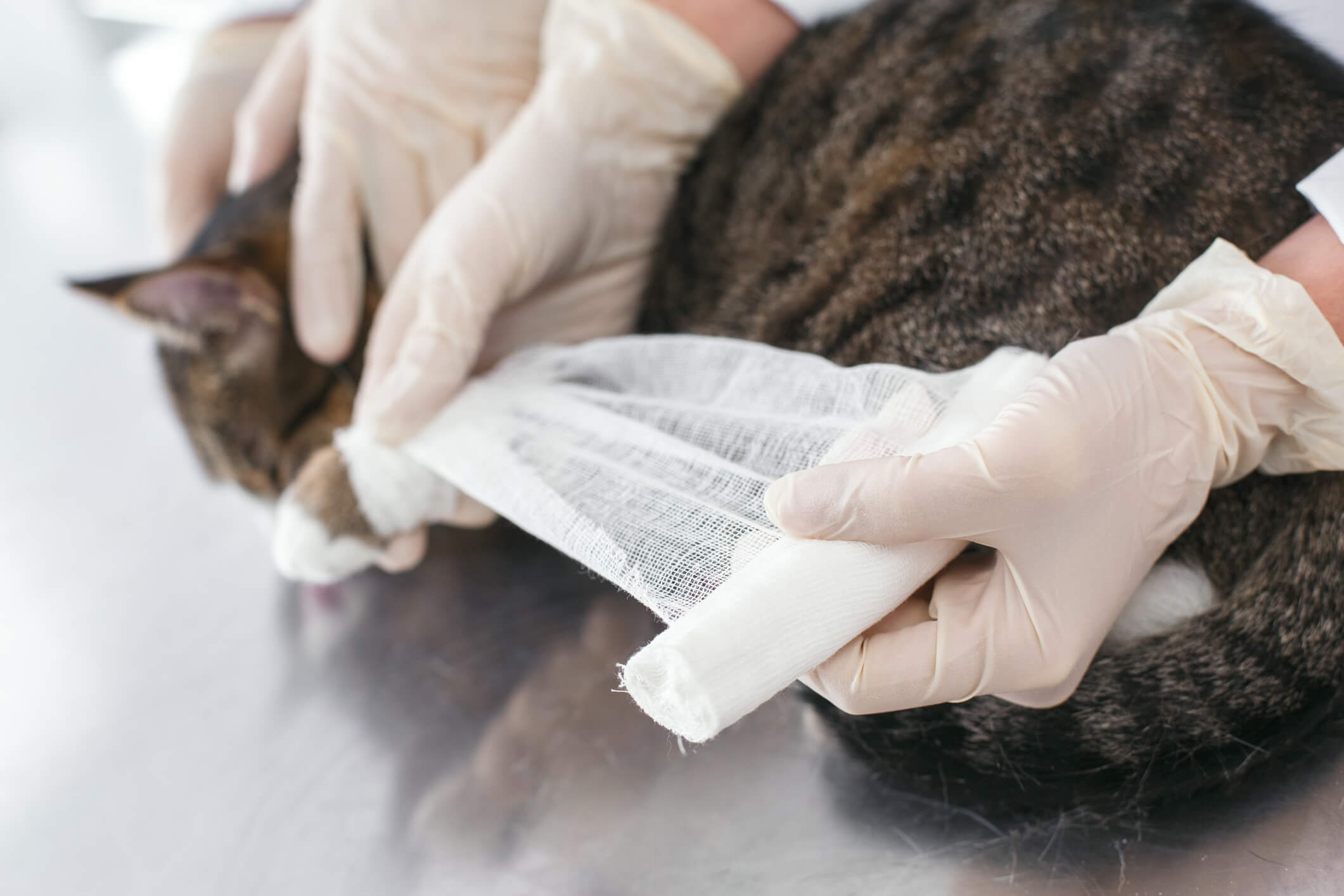
How to Care for a Cat with a Cut or Wound
Feline first aid is a lot like treating minor wounds on a person—staunch the bleeding, clean the wound and put on a bandage until it’s fully healed. But just like with human ailments, it’s important for cat owners to recognize when they have a situation under control and when they’re in way over their heads.
If your pet gets an injury, here are some things you can do to help with an at-home first aid kit as well as the signs to watch for to know when it’s time to call a vet.
Apply pressure to bleeding cuts
If your cat appears with a cut or scrape, the first step you should take is to make sure it has stopped bleeding. Some cuts are minor enough that you won’t notice any blood. If the wound is bleeding, though, you’ll want to staunch the blood flow before you can attempt to disinfect it. Identify where the blood is coming from beneath your cat’s fur, then press gauze or a clean, dry cloth against it. Constant pressure will encourage the blood to clot and form a scab.
The length of time needed to stop the bleeding will depend on the severity of the cut. Despite your cat’s protests, do the best you can to hold the gauze in place until the wound is dry.
Disinfect the wound
If the cat is willing to hold still, owners should disinfect minor scrapes and cuts at home. A damp cloth is fine, but you can also create an antiseptic solution with diluted disinfectants from the store. Diluted versions of povidone-iodine and chlorhexidine diacetate are vet-approved methods for disinfecting cat wounds. Never use rubbing alcohol or hydrogen peroxide because these chemicals will actually damage your cat’s skin and cause digestive problems if they ingest them.
Soak a clean cloth in either water or the diluted antiseptic solution, then gently clean around the wound. If the cut is shallow, you can fill a syringe with the antiseptic and flush the wound’s surface. Deep gashes and scrapes with a large surface area usually require a visit to the vet for proper disinfection. However, owners can still clean around the gash to minimize infection until the vet appointment.
Change the bandages daily
Some wounds take longer to heal than others. Minor scrapes might not require a bandage at all, while others have to be protected for several weeks. As your cat begins the healing process, expect to change their bandages at least once a day. Over time, the bandages will be able to last longer before they need to be replaced. Follow your vet’s guidance on how frequently you should apply fresh bandages to your cat’s wound.
Every time you put on a new bandage, apply a thin coat of antibiotic ointment around—not inside—the wound. This will guard against potential infection while the cut or scrape heals. However, owners should only apply ointment if the cat isn’t able to lick the affected area. Further complications could arise if your cat ingests the ointment, which is why vets often recommend some type of barrier, like an Elizabethan collar.

Administer prescribed medications
At-home treatment for your cat’s wound might also involve administering antibiotics or pain medication. Some over-the-counter medications are available, but you should check with your vet first before medicating your cat.
If your cat received a prescription, follow the vet’s instructions about proper dosage and how frequently you should administer the medicine. Vets can also give advice on how to coax your reluctant feline to take their prescription.
Know when to contact your vet
Not all wounds can be treated with basic first aid. As mentioned before, cat owners should never attempt to clean a deep gash or puncture wound. Animal bites are a common cause of punctures, and the damage often runs deeper than you realize. Only a vet has the expertise necessary to examine the wound, remove foreign debris and properly disinfect deep tissue. Severe wounds often require sutures, X-rays and possibly even surgery.
Contact the vet right away if your cat has developed an abscess. These clusters of pus form under the skin when a wound goes too long without treatment. Abscesses are signs of infection and have to be safely drained by a vet. Cat owners will be instructed to administer an antibiotic to avoid further infections.
Cats are bound to get bumps and bruises at some point along the way. With a bit of luck, your furry feline will enjoy life with very few accidents. If or when those accidents do occur, though, you’ll want to be fully prepared so your cat can heal fast and get back to their normal, playful self.


